Original URL: https://www.theregister.com/2014/08/01/review_fiat_panda_cross/
Fiat Panda Cross: 'Interesting-looking' Multipla spawn hits UK
What the HELL is THAT?
Posted in Personal Tech, 1st August 2014 09:03 GMT
Review The new FIAT Panda Cross comes to the UK in September, just in time for a “64” numberplate, and is looking to add a bit of fashion pizazz to the utilitarian nature of the original Panda 4x4.
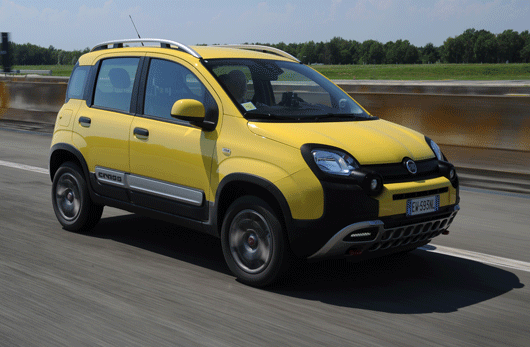
Fiat's Panda Cross: out in the wild but not on sale until September
Everyone agrees on the looks. They are “interesting” and “brave”. That’s certainly not the same as “good” or "attractive". To my mind they ape those of the Fiat Multipla people-mover, a vehicle which often sported the rear bumper sticker “if you think this looks bad you haven’t seen the front yet”. It’s an organic, aquatic look – but more deep-sea angler fish than mermaid.
Fiat is selling the Fiat Panda Cross as being cool and trendy. It’s not aimed at farmers or people who need a 4x4 for work, but more at the Kensington fashion set who want a 4x4 ... that they can park. Fiat calls these people “City Venturers”, but they are not just people who think they have a cool active lifestyle. They are people who work in the city during the week and then genuinely do go off cycling, kayaking or kitesurfing at the weekend.
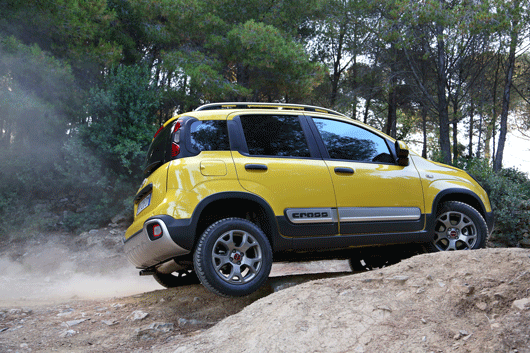
The ELD distributes torque as needed
Of course, the farmers and country vets will buy it anyway, but that’s because it’s capable rather than easy to park in Felpersham. The sizeable gap between the wheels and arches is a sign that this is a genuine off-roader. Fashion would dictate filling that space with 17-inch rims and painted on tyres – that would have looked better, improved fuel economy and reduced road noise – but the lack of space for the wheels to move would have made yomping over rough stuff impossible.
And it’s incredibly capable, not just capable for a small car. At 370cm long and 166cm wide (excluding mirrors), it's shorter and narrower than a MINI. However, it is taller, giving more space inside – and Fiat claims the 225 litre boot is the biggest in class. There is no spare wheel which saves weight, gives you more space and means you are mullered if you hit a rock off-roading and break a rim.
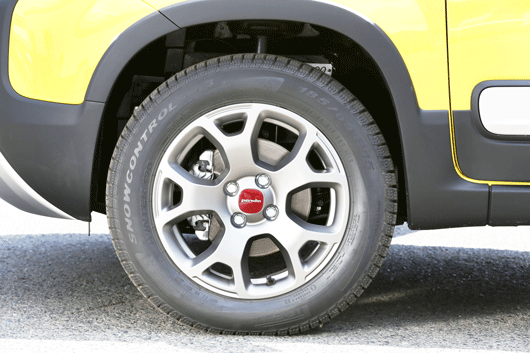
Lots of clearance means good articulations
The pug features come from pragmatically high fog lights and a huge skid plate. The combination of good ground clearance at 160mm and short overhangs enables the little Panda to climb hills with an approach angle of 24° – the exit angle 34° and the ramp angle is 21°.
By comparison, a Porsche Cayenne – which is much taller and has very much bigger wheels – has an approach angle of 27° and departure angle of 25°. This means the Panda will get down slopes the Porsche cannot. And if an incline proves a little too much, there are bright red tow hooks on the front which can be used to haul the thing up.
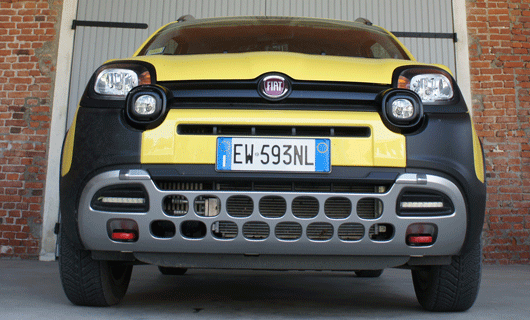
Skid plate and tow hooks are a statement of intent
Fiat has been very successful with yellow cars (there was a wonderful TV advert with a girl in a yellow dress getting into a yellow Fiat) and Fiat has chosen Sole Yellow as the launch colour. The other colours that will be available are Passione Red, Cappuccino Beige, Gelato White, Cinema Black and Toscana Green.
Unfortunately, the 14 Fiat Panda Crosses at the press event were all yellow. So while this is great for playing the “Yellow Car” game, it’s not so good for imagining what it would look like in another colour. Fiat’s yellow is very yellow and I can’t help thinking that with so much black plastic, the red-and-black would look less in your face.
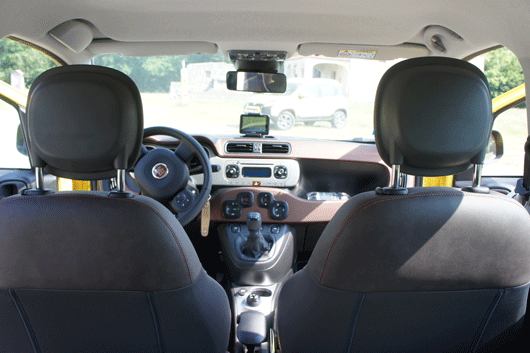
The front is a good place to be
Inside, it’s more stylish than the traditional Fiat Panda 4x4 utility with faux-leather on the doors and the word “Cross” emblazoned on the seats. There is a copper tone dashboard to no doubt match the copper tone yummy mummies who form a key component of the City Venturers.
Torque talk
It’s an important part of car reviews to prod the dashboard, although no one does this to any car they own, and I can report that a prod resulted in a conclusion that it feels Italian and not German, which is a disappointing thing. The steering wheel and gear knob are covered in black leather.
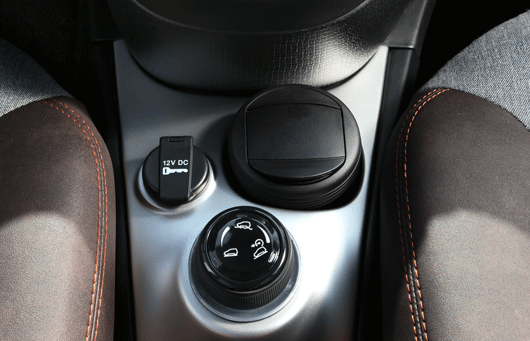
The terrain control needs you to turn and hold
Fiat misses a trick with the off-road controls by putting them where Saab put the ignition key – between the gear lever and oddly shaped handbrake. If instead it was a steering wheel-mounted control, the off-road could have aped a Ferrari Manettino.
The Fiat Panda Cross comes with two engine options: a 1.3 Multijet diesel and the wonderful buzzy 875cc two cylinder turbo TwinAir engine. The latter is used to (probably better) effect in the 500 and the Alfa Romeo Mito. The diesel pushes out 80hp and the petrol engine 90hp – down 15bhp on the Alfa implementation.
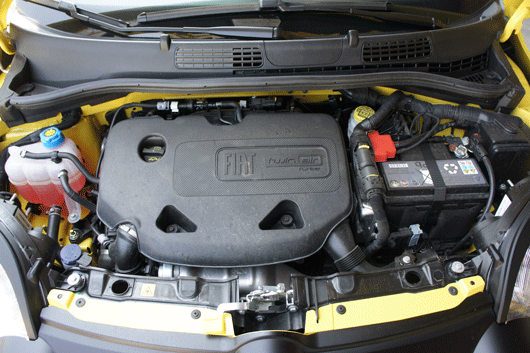
Small turbo charged engines are efficient and powerful: the TwinAir turbo 90HP from 875cc
The diesel naturally has more torque: 190Nm over the TwinAir 145Nm. This gives the top car a top speed of 100mph (161kmph) in diesel form and 104mph (167kmph) under petrol power. The petrol version tips the scales at 1,090kg and the oil burner is 1,155kg, so it’s not that rapid. Fiat give figures on the 0-62.5 time (0-100kmh) of 14.3 seconds for diesel and 12.0 seconds for petrol.
The 4x4 system uses two differentials and ELD (Electronic Locking Differential), an electronic coupling, to ensure that wheels which have grip get the most power, and there is an ESC (Electronic Stability Control). The multiple-clutch joint, with electro-hydraulic control, transfers up to 900Nm of torque to the rear (equivalent to the whole torque the engine can deliver) in one-tenth of a second, which means the car can react practically immediately and handle poor grip conditions.
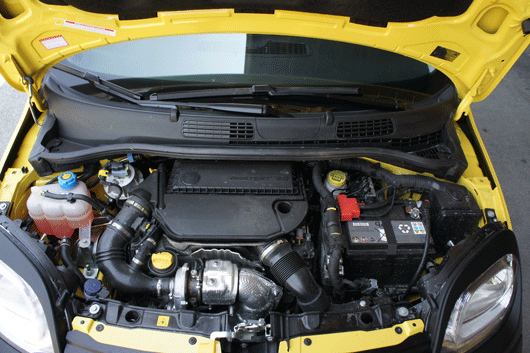
A bigger capacity than the petrol engine, the 1.3 is a snug fit. The engine works well but needs a sixth gear
This means in slippery conditions you won’t have the wheels with the least traction spinning. The electronic differential has three modes: Auto, off-road and hill descent, which are selected from a rotary control between the handbrake and gear-lever.
In Auto, torque is shuffled between front and rear axles depending on the road surface. This will usually mean that 98 per cent of the power goes to the front, as this is the most economical configuration but as the power is needed at the back the electronics juggle it as necessary. Unfortunately there is no dashboard display to tell you what is going on.
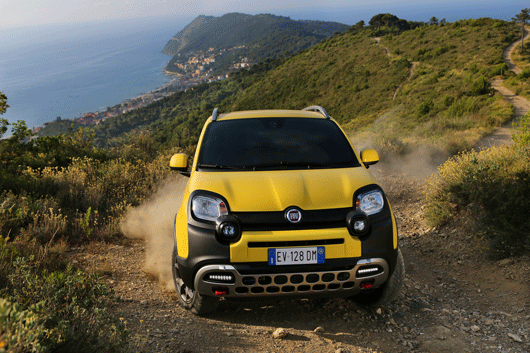
Off road mode shuffles torque as necessary
In Off-road mode, the all-wheel drive becomes permanent, braking the wheels that are losing grip, or slipping more than the others, and transferring the drive to those with the most grip. The Electronic Locking Differential (ELD) is engaged, pre-loading the torque on the rear to achieve a integration of the 4x4 drive more quickly; it prevents ASR intervention. In this way it optimises the traction on uneven terrain. The off-road mode automatically disengages at a little over 30mph (48kmph) to save fuel.
The HDC (Hill Descent Control) mode magically controls the brakes as you go down steep inclines. It keeps the car at a constant speed acting independently and separately on the brakes. The HDC function comes into action automatically when the speed drops below 16mph (26kmph) and remains in standby mode up to 30mph (48kmph).
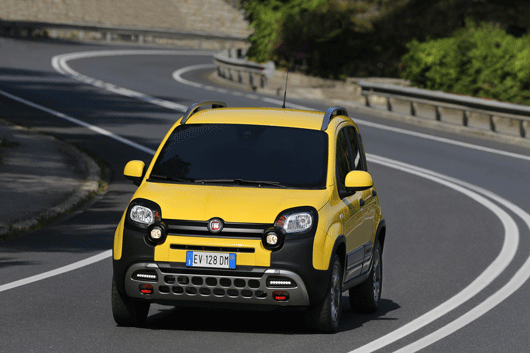
The Fiat zips around bends
This isn’t a sports car and doesn’t pretend to be an Integrale, but zipping around country roads it's lively with an eager turn-in. Throw it into a bend a little too enthusiastically and the front end will understeer until the four wheel drive keeps it in check. All in all, it has much better cornering than you’d expect. On gravel tracks it proved sure-footed and over really uneven surfaces the suspension damping is pretty good.
The Panda Cross has an independent MacPherson arrangement at the front and an interconnected wheel with torsion beam layout at the rear, specifically developed for the all-wheel drive version. Compared to the semi-trailing arm solution of the previous generation, the rear suspension is lighter and provides better ride and less noise, with the same off-road performance as before.
Rock and roll
It’s as tall as it is wide, so predictably there is some body roll, particularly on corners with adverse camber, but this is better controlled than you’d expect. On all counts the suspension and drive train punch well above their weight.
The Panda Cross has electric power steering – something I hate. A “city” button only makes it worse as it obfuscates steering feel, however in this Fiat it isn’t so bad - falling somewhere between “OK” and “surprisingly good”.
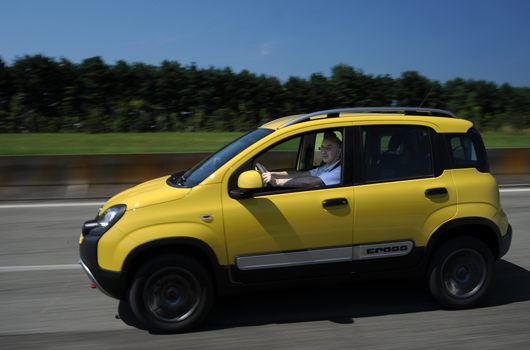
Taking the Panda Cross around the Fiat test track
Given that this something you might very well take on long journeys on the motorway, driving needs to be comfortable and Fiat explains that it has added to the soundproofing, especially in the diesel version where sound-absorbing material has been added between the firewall and dashboard. The TwinAir sounds better and there is no wind noise from the wing mirrors with those mud and snow tyres rumbling.
I tried both the TwinAir and the diesel and felt that the excitable TwinAir more suited the car than the oily one. The diesel only has a five speed gearbox and could have benefited from the six-speed fitted to the smaller engine. The TwinAir, despite being revvy, runs out of puff at 5500rpm, but naturally that’s a good 1500rpm up on the diesel.
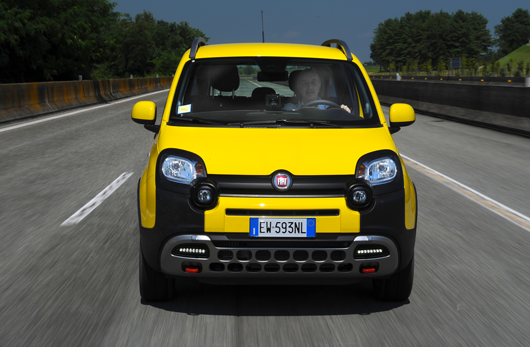
Some comfort sacrificed for compactness and off-road capability
Driving the Panda Cross around Fiat’s Balocco proving ground was an eye-opener. The little Panda climbed incredibly steep slopes, and the Hill Descent Control was more an exercise in faith than driving: engage HDC, roll over a precipice and then let it control the brakes. Your instinct is to press the middle pedal but to do so would be foolish. It would disengage the system and leave you struggling with the situation. Leave yourself in the hands of the mechanics and electronics and you’ll be fine.
Fording Fiat's fake river was easy with the air intake 739mm above the ground in the diesel and 711mm in the TwinAir that I took around the off-road circuit.
The driving position is good, and vision excellent. Being a little taller than most compact cars helps. You’ll get an adult in the back but it’s not somewhere to spend too much time. For trans-European runs to the ski-slopes you’d only really want to do it two-up.
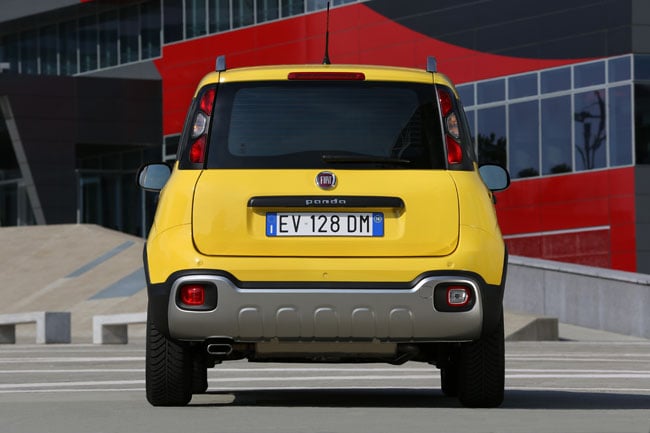
Looks like an old Renault 4 from behind
In recent years we’ve seen spectacular improvements in car fuel economy, with the Ford Ecoboost and Fiat TwinAir being in the forefront of these efforts. Here, the TwinAir manages 47.9mpg on the urban cycle, 65.7mpg on the extra urban cycle and 57.6mpg combined. The diesel clocks in at 56.4mpg on the urban cycle, 61.4 on the extra urban cycle and 60.1mpg on the combined cycle. The CO2 emissions are 125 g/km diesel and 114 g/km for the petrol engine.
Fiat expect sales to be 50:50 with the TwinAir costing around £15,945 and the diesel costing £1,000 more, although even from the off Fiat said there will be deals to be done on financing and insurance.
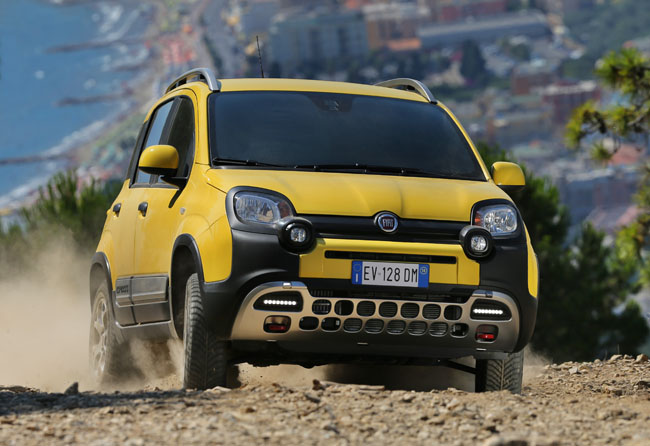
Town and country
Reg Verdict
The Panda Cross 4x4 is an incredibly capable little off-road car. It compromises some luxury for the ability to scale mountains and rear space for easy of parking, but will find favour with both the “City Venturers” Fiat is targeting and country types. The UK will be the first country in the world to get the Fiat Panda Cross with a launch in September. It might look more grumpy than cross but it's not just a city face. ®